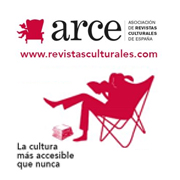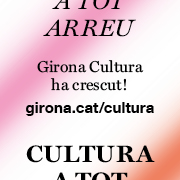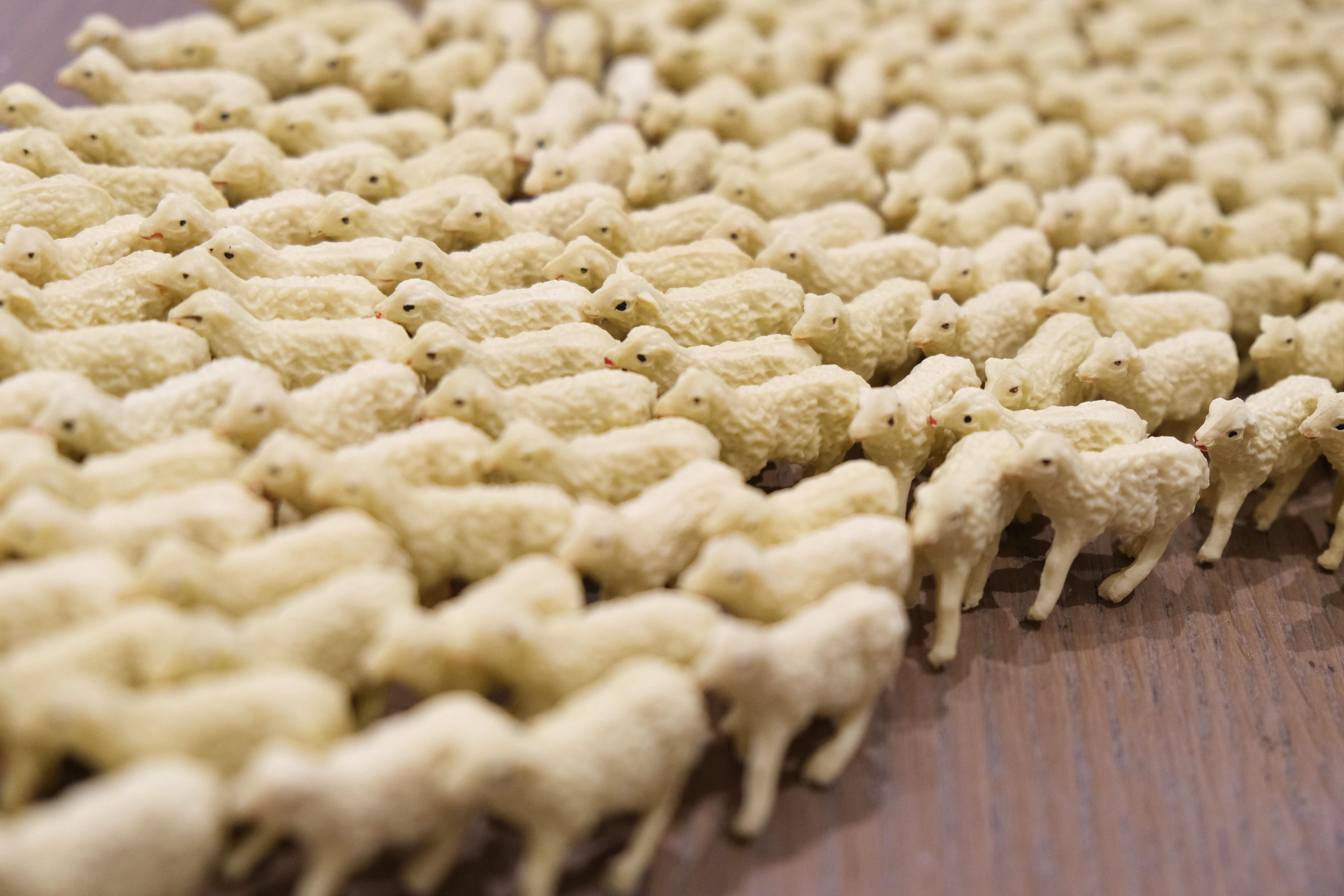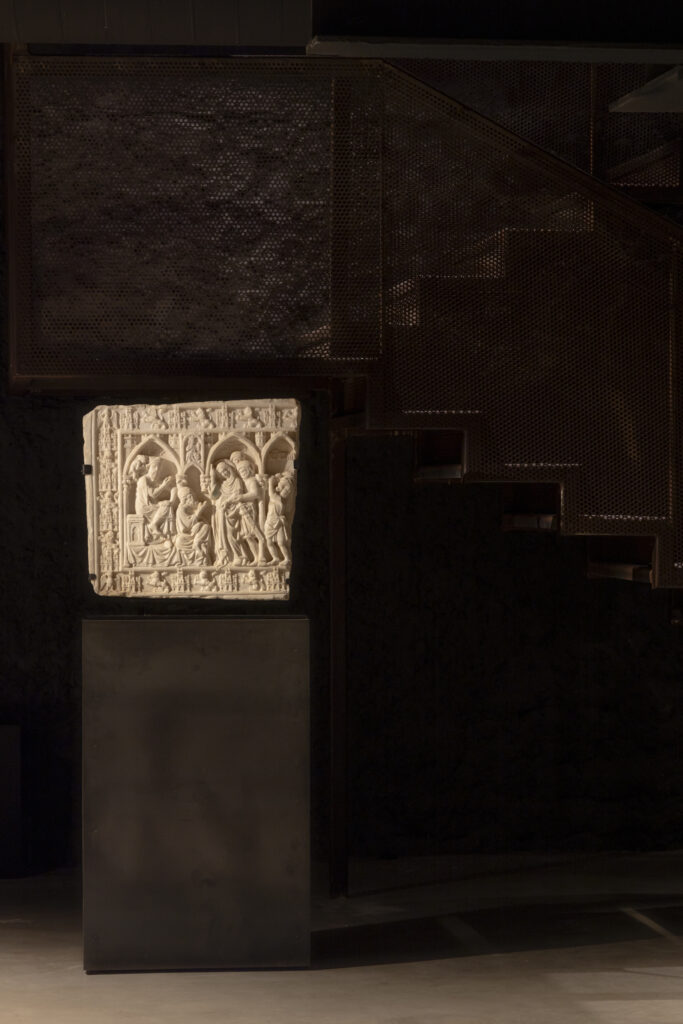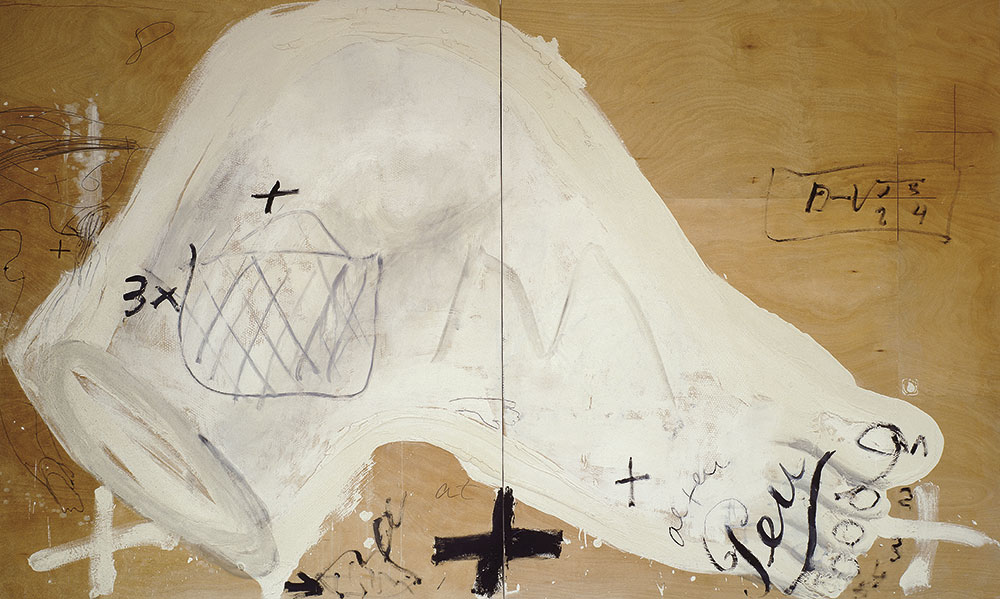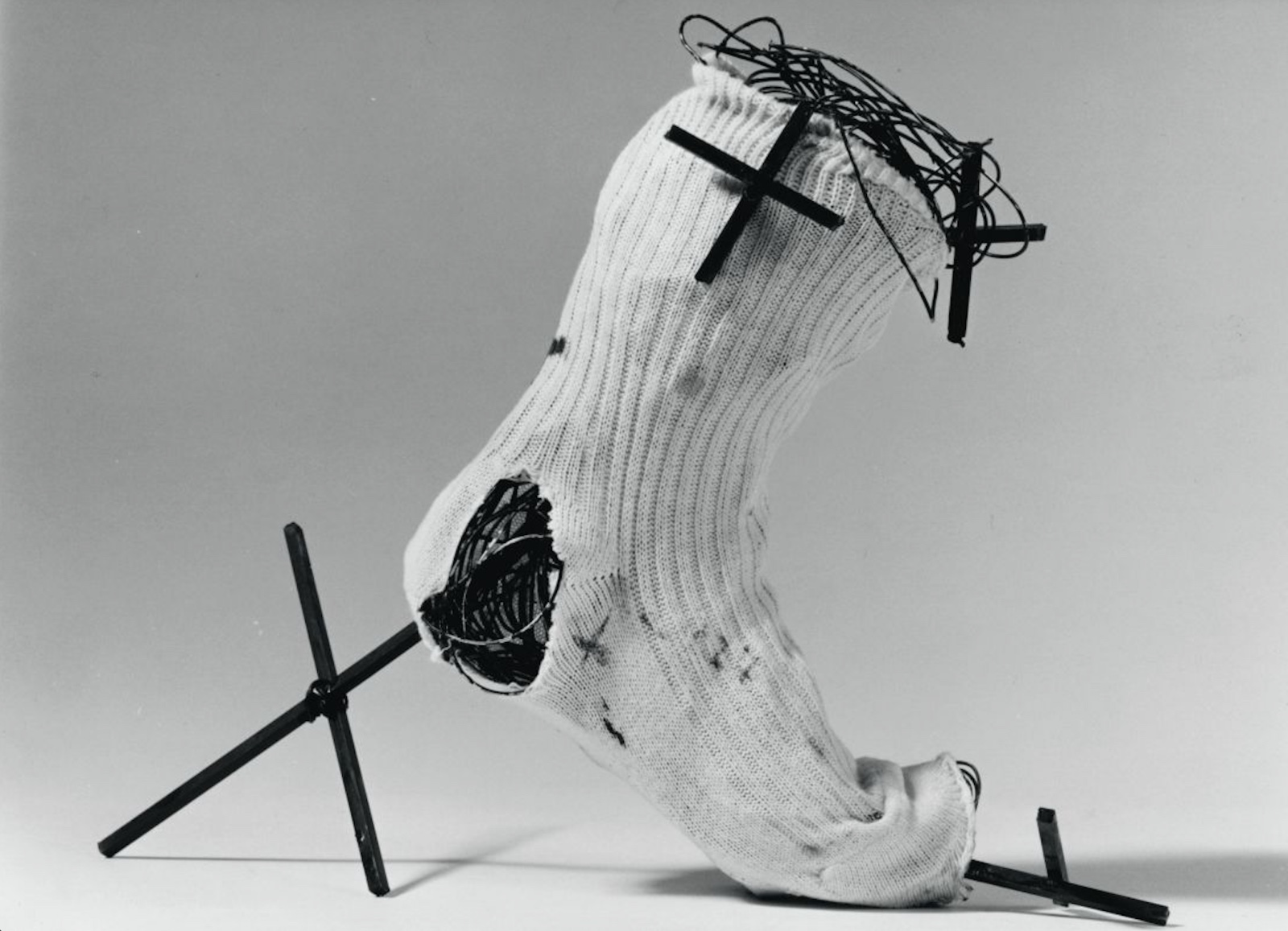reports
The Medusa face on Minerva's shield
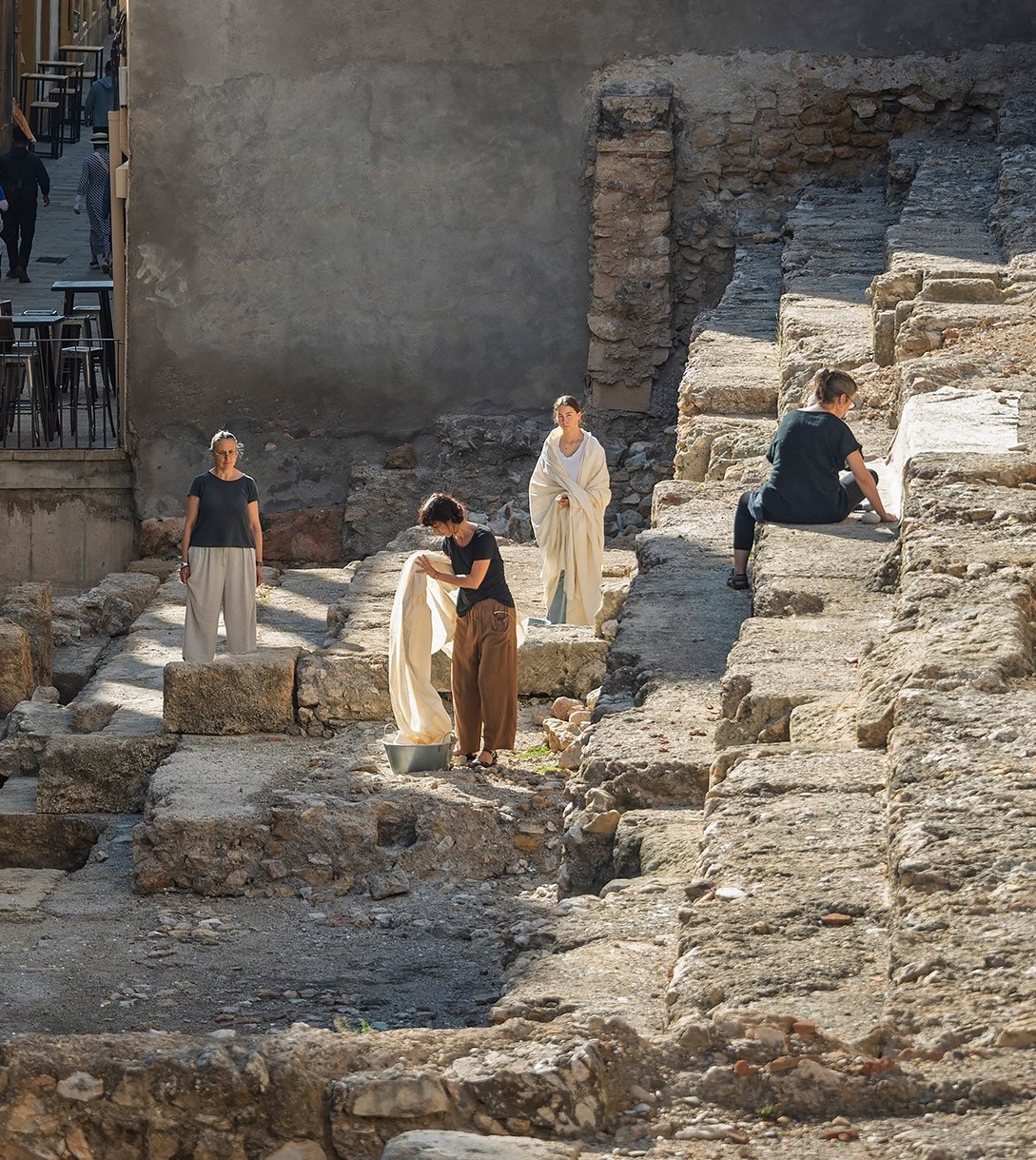
On the occasion of the year of celebration of the 25th anniversary of the archaeological site of Tàrraco, on May 31st the performance cycle El rostre de Medusa a l'escut de Minerva was presented with Anna Dot, Laia Estruch, Núria Rion, Mariona Moncunill, Mireia Coromina and nara is neus, a project by Marta Pol Rigau and produced by the Museum of Modern Art of the Diputació de Tarragona.
The cycle aims to analyze gender conditions in the classical world, from a political, ritual or poetic dimension, not only as a review of the past, but as a reconsideration of this cultural legacy in the present. For this reason, it has been carried out in two historical sites of the city, the wall of the archaeological promenade and the area of the Roman circus.
The myths of Minerva and Medusa
Although at first glance, the presence of female figures in the monuments of Roman Tarraco may seem almost non-existent, images and references to women, heroines and goddesses have been found in the city's great monuments. As is the case of the relief of Minerva located at the top of the Wall of the archaeological walk and the mosaic of Medusa in the Roman Villa of Munts. According to the remains found, and as can be seen in the relief of the wall, Tarraco, due to its beginnings as a military camp, adopted Minerva as an apotropaic deity, that is, protector of the city. Born from the head of Jupiter, adult and dressed as a warrior, she becomes the most significant referent of masculinized femininity. The figure of Medusa, on the other hand, becomes the emblem of femininity punished for her irresistible beauty. According to Ovid, Neptune, god of the sea, is overcome with rage and does not rest until he manages to satisfy his desire, against the young woman's will, in the temple of Minerva. Minerva, outraged by the desecration of her temple, punished Medusa and transformed her into a chthonic monster that terrifies and turns to stone those who gaze intently into her eyes. Perseus is the key agent in triggering the story, since having to deliver Medusa's head to Minerva as a symbol of the success of her feat, the goddess places it in the middle of her shield as a badge to defeat evil.
Thus, the face of Medusa and the figure of Minerva do not correspond to the prototype of the ideal of the woman that was defended in ancient culture, but are the antithesis of the exemplary matron, daughter, wife and mother. These mythological figures are an example of how in classical society, faced with the distrust they felt towards the beauty, wit and intelligence of women, they put into practice control mechanisms in accordance with the role that determined their raison d'être. A function, not precisely with a public dimension as citizens —because it was an exclusive right of men— but from the private sphere, that is, procreation and domestic activities.

Rituals and performances
Although the role of women in rituals was considerably restricted, because public priestly obligations always fell to men and, in family cults, those in charge were the fathers of the family. In one of the few moments when women had access to public space, it was during some religious celebrations, such as the Vestals. However, their scope of action as normal women was in the rituals of transit associated with the life trajectory. Following this common thread, the cycle of actions should be structured in the following sections: Public religious ceremonies, family ceremonies and human female figures.
Public religious ceremonies
Mireia Coromina 's Compondre action establishes a dialogue between bread as food and sacred element within the feminine ritual world of ancient Rome and the verb "compondre", whose meaning highlights the sense of restoring order and creating harmony.
The action is related to the protective ceremonies carried out by the Vestal Virgins, responsible for making the sacred unleavened bread (mola salsa), with the function of purifying animals before sacrificing them as an offering to the gods, acting as a bridge between mortals and divinities, as the artist says. Following in this liturgical ritual of breaking the bread, Coromina sacralizes this verb by arranging the unleavened bread, crumbling it to fill the gaps of the cut letters of the word compondre on a surface that acts as a mold, so that, when the matrix is removed, the word is drawn on the ground like an epigraph. A symbolic act of making an inscription, evoking the Roman tradition of libations to ask for good omens or to obtain benefits for society.
 Mireia Coromina Compondre dins del cicle d'accions 'El rostre de Medusa a l'escut de Minerva'. © Diputació de Tarragona. Arxiu fotogràfic MAMT. Lila Alberich fotografia.
Mireia Coromina Compondre dins del cicle d'accions 'El rostre de Medusa a l'escut de Minerva'. © Diputació de Tarragona. Arxiu fotogràfic MAMT. Lila Alberich fotografia.
The family ceremonies in which women played an active role were the rituals linked to welcoming life and saying goodbye to death, as presented by the actions of Anna Dot and Núria Rion.
The action First Bath Anna Dot evokes, around the sculpture of the Capitoline Wolf on the Paseo de la Muralla, the ancient Roman ceremony of the Dies Iustricus , a ritual of purification, acceptance and welcome of the newborn into society. The steps to follow to develop the ritual were to invoke the protective goddesses (Rumina, Carmenta, Cuba and Fortuna). First, to invoke the goddess Rumina with libations of breast milk, then to deliver the talisman which consists of making some clay moonstones to end with the offering of honey and bread to ask for the health of the child, to conclude, with the purification with perfumed water and smoke of sacred herbs to protect the new life, in this case her daughter.
In this ceremony, women play a vital role. On the one hand, midwives are a key player in both pregnancy and birth, playing a role similar to that of midwives. On the other hand, the family ties of women are fundamental. On this occasion, the artist, accompanied by two women closely linked to the baby, the grandmothers, carry out a symbolic baptism ritual:
Oh, Rumina, silent mother, / you who nourish with your gentle breath, / may your milk flow like a fertile river, / may your generous breast bathe this child with life. / Like the she-wolf who welcomes orphans, / like the sap that rises to the branch, / be nourishment and shelter, / be embrace and strength. Accept this offering of milk, / white as the water of the snow, / sweet as the promise of an open path. / Rumina, listen to us and be welcome here.
 Anna Dot Primer bany 2025, dins del cicle d'accions 'El rostre de Medusa a l'escut de Minerva'. © Diputació de Tarragona. Arxiu fotogràfic MAMT. Lila Alberich fotografia.
Anna Dot Primer bany 2025, dins del cicle d'accions 'El rostre de Medusa a l'escut de Minerva'. © Diputació de Tarragona. Arxiu fotogràfic MAMT. Lila Alberich fotografia.
And Fer aflorar , by Núria Rion , deals with the condition of invisibility of women in Roman culture through the use of fabrics that cover them, such as the "Palla" . A traditional piece of clothing in Ancient Rome that could be made of cotton, linen or silk, the material was associated with the seasons and their status within society. In addition, the "palla" embodies the culmination of the feminine ideal, since the coverage highlights the values of austerity, loyalty and modesty, values intrinsically linked to her mission of raising and educating children within the framework of a legitimate marriage. Therefore, this piece accompanies her in the crucial moments of her existence: initially, it is the cloak that protects her at birth, the layer that protects her in adult life in the public sphere and the funeral shroud that covers her at the time of death.
One way of encoding this vital symbolism was to transform the fabrics through the application of natural dyes: wine red, birth, olive leaf yellow, life, while ash gray—the charcoal, remains of the cream—represents death. As one of the fabrics, throughout the day, was subjected to a print using frottage , it was not until the moment of presentation that the amplified sound of the charcoal contacting the fabric on the worn-out stand was emitted, simulating in an allegorical way, the impact of the transit of life in the course of time. Once the frottage was finished, the other two fabrics were dyed and, when finished, they were spread out on the stand, one next to the other to talk about: birth, life and death.
 Núria Rion Fer aflorar dins del cicle d'accions 'El rostre de Medusa a l'escut de Minerva'. © Diputació de Tarragona. Arxiu fotogràfic MAMT. Lila Alberich fotografia.
Núria Rion Fer aflorar dins del cicle d'accions 'El rostre de Medusa a l'escut de Minerva'. © Diputació de Tarragona. Arxiu fotogràfic MAMT. Lila Alberich fotografia.
The female human figures of Mariona Moncunill, Laia Estruch and nara is neus review the meaning of the myths of Medusa and Minerva to confirm the pre-existence of sexist stereotypes, both in history and in classical literature.
As Mariona Moncunill says, this action entitled Fonteia a Clàudia, Júlia a Valèria derives from the invisibility to which history has led the real women of ancient Rome and the difficulty of recovering and interpreting the traces that reach us as faint and deformed reflections of the past. To address the historical invisibility of the real women of ancient Rome and the difficulty of interpreting the vestiges that have survived to this day, Moncunill works on the stories according to the vestiges found in Tarragona and in secondary sources such as the book Soror, dones a Roma by Patricia González Gutiérrez. However, despite starting from the letters of Ovid's Heroides, she seeks to free female figures from invisibility, instead of referring to mythological figures, the artist collects statements from real women of the past such as Fonteia Eleusis, Clàudia Severa, Oliveras Saturnina or Valèria Fida, who were unable to communicate with each other.
In this action, the artist recovers her voices through transtemporal telephone calls and mirrors that connect the different rooms, to make a kind of journey through the caves of time. In the first of the three rooms of the internal corridor of the Circus, Mariona Moncunill gathered the audience, leaving the intermedia empty, and she arranged herself in the final room, all of them connected by mirrors. Thus, when the phone rings in the first room, and a person picks it up and places himself at the intersection of reflections of the mirrors of the rooms, in addition to listening to the message and then retransmitting it or not, she is the only one who can maintain a visual and sound interaction with the artist.
 Mariona Moncunill Fonteia a Clàudia, Júlia a Valèria dins del cicle d'accions 'El rostre de Medusa a l'escut de Minerva'. © Diputació de Tarragona. Arxiu fotogràfic. Lila Alberich fotografia.
Mariona Moncunill Fonteia a Clàudia, Júlia a Valèria dins del cicle d'accions 'El rostre de Medusa a l'escut de Minerva'. © Diputació de Tarragona. Arxiu fotogràfic. Lila Alberich fotografia.
In the performance The Voice of the Stones , Laia Estruch immerses herself in an exploration of the registers, marks and shapes present in the stones that make up the wall, with the aim of revealing the hidden and silent voices of Minerva and Medusa. To rescue the essence and vitality of these female voices contained in the wall, the artist transforms the registers into a score. For this reason, the a cappella voice is conceived as a porous material, analogous to the mud and earth of the stones, in order to make these stony voices resonate and create a sound piece with a flexible structure full of nuances.
As the artist points out, he creates a new soundscape of voices, through phonetic declamations, focusing attention not only on the emission of sound, but also on the intentions and emotions expressed through the modulation of tone, volume and vocal power.
 Laia Estruch La veu de les pedres dins del cicle d'accions 'El rostre de Medusa a l'escut de Minerva'. © Diputació de Tarragona. Arxiu Fotogràfic MAMT. Lila Alberich fotografia.
Laia Estruch La veu de les pedres dins del cicle d'accions 'El rostre de Medusa a l'escut de Minerva'. © Diputació de Tarragona. Arxiu Fotogràfic MAMT. Lila Alberich fotografia.
As for the concert-action Nocivas - in Latin, no-civas - by nara is neus, it focuses on the status of women as non-citizens in ancient society to give it a new meaning through music and poetry.
In this piece the artist examines the condition of women in classical society dominated by male control, who, like slaves, could not be considered citizens, since this right was an exclusive privilege of men. Consequently, the concept of non-cives , that is, non-citizen has been reinterpreted from the derogatory perspective of harmful, evil and unhealthy people, with the aim of exclusion. In line with this ideology, the piece played live includes recordings made using instruments of the time, such as the lyre or the panpipes. It also breaks up and rearranges poems by Ovid to give voice to the "harmful", that is, to the female figures who were controlled and silenced.
 nara is neus Nocives dins del cicle d'accions 'El rostre de Medusa a l'escut de Minerva'. © Diputació de Tarragona. Arxiu fotogràfic MAMT. Lila Alberich fotografia.
nara is neus Nocives dins del cicle d'accions 'El rostre de Medusa a l'escut de Minerva'. © Diputació de Tarragona. Arxiu fotogràfic MAMT. Lila Alberich fotografia.
Finally, it can be said that the cycle The Face of Medusa on the Shield of Minerva , through artistic actions carried out in historical spaces of Tarragona, reviews the myths of Medusa and Minerva, highlighting their symbolism as female figures that break with the traditional ideals of women in ancient culture. Within this common thread, the artists in the actions address issues such as the historical invisibility of women, their role in religious rituals and their exclusion as full citizens in Roman society. Each artist uses different performative media, such as music, poetry, frottage and visual interaction, to resignify the Roman cultural legacy from a contemporary feminist perspective.

